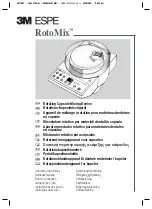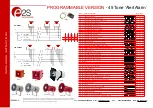
Operating modes
WS103 is a stand-alone multiradio module that supports Wi-Fi
®
, Classic Bluetooth
®
, and Bluetooth
®
Low
Energy (planned). It can run as a single radio module with only one radio-mode enabled or as a true
multiradio module with both Bluetooth
®
and Wi-Fi
®
enabled concurrently. When WS103 runs as a
multiradio module, coexistence is handled internally and will swap between Bluetooth
®
and Wi-Fi
®
when
needed and ensures that no transmissions occur simultaneously. The WS103 interface is designed to
provide wireless access to the CAN data of a vehicle or machine or system via WLAN / Bluetooth
®
. The
module can be used as CAN-WLAN / Bluetooth
®
interface or wireless CAN-CAN bridge. In a CAN-WLAN /
Bluetooth
®
interface, WS103 is used for transmission of CAN data to other WLAN / Bluetooth
®
/ network
devices, such as computers, smartphones or tablets on which the CAN data can be managed and
evaluated.
Power modes
Power saving mode is available to optimize the power consumption. To enable the power saving mode
the device must be configured by using the WS Wireless Configurator and the PIN3 will be used to enable
this functionality.
Host processor
The host processor is composed of a high-performance ARM
®
Cortex
®
M4 microcontroller (MCU) The MCU
operates at a system frequency of up to 168 MHz and has 1 MB of Flash and 256 KB of RAM memory. The
dimensioning memory size (32 MB) allows sufficient reserves to implement additional firmware features
at a later date.
CAN interface
WS103 features one CAN interface. Communication through various CAN protocols such as CANopen,
J1939, is possible. The CAN interface meets the specification CAN 2.0 A/B protocol and the physical layer
according to ISO 11898-2 high-speed up to 1 Mbit/s. Support for CAN-FD is not available. The CAN
interface is operational only when power supply is energized.
Serial interface
The serial port RS-232 is used to configure the WS103 by using the WS wireless configurator and to
upgrade the FW of the device by using WS FW programmer. The max bit rate on the serial port is 230
kbit/s.
WLAN frequencies
A Wireless Local Area Network (WLAN) uses Radio Frequency (RF) technology to transmit and receive
data over the air. To enable transmission of different types of communication as data, it is essential that
hardware and software comply to specified standards. The Institute of Electrical and Electronics
Engineers (IEEE) have established the IEEE 802.11 standard, which is the most used WLAN standard of
today. WLAN products based on the 802.11b/g standards operate in the 2.400 to 2.497 GHz frequency
range. APs supporting the 802.11b/g standard have up to 14 channels with center frequencies that are 5
MHz apart (applies to channel 1 to 13) either 22 MHz (802.11b) or 20 MHz (802.11g), the center
frequencies for non-overlapping channels must be at least 25 MHz apart. The 802.11b and 802.11g
specifications include the following restrictions:
Restrictions
Radio Band
2.4 GHz
Maximum data rate
11 Mbps (802.11b)
54 Mbps (802.11g)
Technical Information
WS103 Remote Solution
Functions
18 |
©
Danfoss | April 2016
BC00000365en-US0102
Содержание WS103
Страница 1: ...Technical Information Danfoss Telematics Solutions WS103 Remote Solution powersolutions danfoss com...
Страница 29: ...Technical Information WS103 Remote Solution Danfoss April 2016 BC00000365en US0102 29...
Страница 30: ...Technical Information WS103 Remote Solution 30 Danfoss April 2016 BC00000365en US0102...
Страница 31: ...Technical Information WS103 Remote Solution Danfoss April 2016 BC00000365en US0102 31...














































